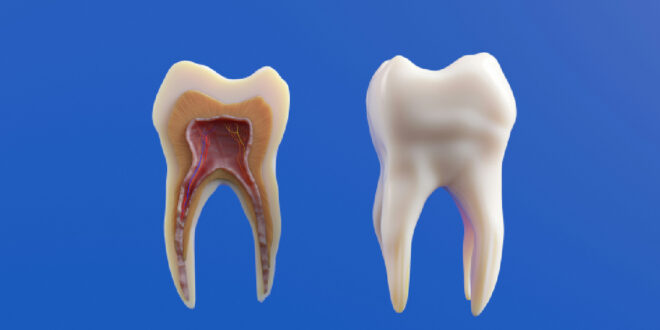Toothaches can strike without warning, causing unbearable pain that disrupts your sleep, work, and peace of mind. While visiting a dentist is the ultimate solution for diagnosing and treating the root cause, there are several home remedies for toothache that can offer instant and effective relief—often in just a few minutes. These natural methods have been used for generations and can provide a temporary solution until you can get professional help.
In this blog, we’ll explore a wide range of home remedies for toothache, how they work, and the right way to use them. From kitchen staples to time-tested Ayurvedic solutions, we’ll cover everything you need to know to combat tooth pain swiftly and naturally.
What Causes a Toothache?
Before we dive into the remedies, it’s essential to understand what might be causing the pain. Toothaches usually stem from:
- Tooth decay or cavities
- Gum infections (gingivitis or periodontitis)
- Cracked or broken teeth
- Dental abscess
- Food stuck between teeth
- Tooth grinding (bruxism)
- Sinus infections
- Erupting wisdom teeth
These issues may inflame the tooth’s pulp or surrounding nerves, resulting in sharp, throbbing, or constant pain. While home remedies offer short-term relief, identifying the cause is key to preventing future toothaches.
1. Salt Water Rinse – The First Line of Defense
Why it works: Salt has natural antibacterial and anti-inflammatory properties. A saltwater rinse can clean the affected area and reduce swelling.
How to use:
- Mix 1 teaspoon of salt in a glass of warm water.
- Swish it around in your mouth for 30 seconds.
- Repeat 2–3 times a day.
Quick Tip: Do not swallow the solution. This method is excellent for mild pain or swelling caused by trapped food particles or early gum infections.
2. Clove Oil – Nature’s Painkiller
Why it works: Clove oil contains eugenol, a powerful natural anesthetic and antibacterial agent. It numbs pain and fights infection.
How to use:
- Soak a cotton ball in clove oil.
- Apply it directly to the affected tooth and gums.
- Alternatively, chew on a whole clove slowly to release the oil.
Caution: Use in moderation; excessive clove oil can irritate tissues.
3. Cold Compress – Reduce Swelling and Numb Pain
Why it works: Cold temperature constricts blood vessels and numbs the pain area, reducing inflammation.
How to use:
- Wrap a few ice cubes in a towel.
- Place it on the cheek over the painful area for 15 minutes.
- Repeat every hour if needed.
Best for: Toothaches caused by trauma or swelling.
4. Garlic – A Natural Antibiotic
Why it works: Garlic contains allicin, which offers antimicrobial properties and can kill the bacteria causing pain.
How to use:
- Crush a garlic clove to release the oil.
- Apply directly to the affected area.
- Leave for 5–10 minutes, then rinse your mouth.
Alternative: Mix crushed garlic with a pinch of salt before application for enhanced effect.
5. Peppermint Tea Bags – Soothing and Numbing
Why it works: Peppermint has mild numbing properties and a cooling sensation that soothes the gums.
How to use:
- Steep a peppermint tea bag in boiling water.
- Let it cool slightly (warm or cold works).
- Apply the bag directly on the aching tooth for 10–15 minutes.
6. Hydrogen Peroxide Rinse – Disinfect and Relieve
Why it works: Hydrogen peroxide kills bacteria, reduces plaque, and helps heal bleeding gums.
How to use:
- Mix 3% hydrogen peroxide with equal parts water.
- Swish in your mouth for 30 seconds.
- Spit it out and rinse thoroughly with water.
Important: Do not swallow. Not recommended for children.
7. Onion – An Unlikely but Effective Healer
Why it works: Onions have antibacterial and antiseptic properties that can kill germs and relieve pain.
How to use:
- Cut a raw onion.
- Place a slice on the affected area.
- Chew gently to release juice, or just hold it near the pain for 10–15 minutes.
8. Guava Leaves – A Traditional Ayurvedic Remedy
Why it works: Guava leaves have anti-inflammatory, analgesic, and antimicrobial properties.
How to use:
- Chew 1–2 fresh guava leaves until the juice covers the affected area.
- Alternatively, boil leaves in water, let it cool, and use it as a mouth rinse.
9. Vanilla Extract – Quick Numbing with a Pleasant Taste
Why it works: Alcohol in vanilla extract can numb pain, and its antioxidants promote healing.
How to use:
- Dab a small amount on a cotton swab.
- Apply to the affected area for temporary relief.
- Reapply a few times a day as needed.
10. Turmeric Paste – Anti-Inflammatory Gold
Why it works: Turmeric has powerful anti-inflammatory and antibacterial properties.
How to use:
- Mix 1 tsp turmeric with water or honey to form a paste.
- Apply directly to the painful area.
- Leave for 10–15 minutes, then rinse.
11. Baking Soda Paste – Balancing Oral pH
Why it works: Baking soda neutralizes acids and reduces inflammation.
How to use:
- Mix baking soda with a few drops of water to make a thick paste.
- Apply it to the affected tooth and leave it for a few minutes.
- Rinse thoroughly.
12. Cold Cucumber Slices – Gentle Cooling Agent
Why it works: Cucumber’s cooling effect soothes inflamed gums.
How to use:
- Slice a chilled cucumber and place on the sore area.
- Let it sit for 10–15 minutes.
- Can also be mashed into a pulp and applied directly.
13. Asafoetida (Hing) – Ayurvedic Secret Weapon
Why it works: Asafoetida is anti-inflammatory and reduces nerve-related tooth pain.
How to use:
- Mix a pinch of asafoetida with lemon juice or water.
- Warm slightly and apply to the affected area with a cotton swab.
14. Neem (Indian Lilac) – Ayurvedic Antibacterial Hero
Why it works: Neem fights bacteria, reduces swelling, and strengthens gums.
How to use:
- Boil neem leaves and use the water as a rinse.
- Neem oil can also be applied to the gum area using a cotton ball.
15. Oil Pulling – A Holistic Oral Detox
Why it works: Swishing oil helps remove toxins, bacteria, and reduces inflammation.
How to use:
- Swish 1 tablespoon of coconut or sesame oil in your mouth for 10–15 minutes.
- Spit it out (don’t swallow), and rinse with warm water.
Best practiced in the morning on an empty stomach.
When to See a Dentist
While home remedies for toothache offer quick relief, they are not permanent solutions. It’s crucial to seek dental care if:
- The pain lasts more than 2 days
- You have swelling, fever, or pus
- There’s difficulty in opening your mouth or chewing
- The tooth is cracked or severely decayed
Delaying treatment can lead to complications like abscesses, nerve damage, or even systemic infections.
Preventing Toothaches Naturally
In addition to trying these home remedies for toothache, prevention is always better than cure. Here are simple habits to protect your dental health:
- Brush twice daily with fluoride toothpaste
- Floss to remove food particles
- Avoid sugary snacks and sodas
- Rinse your mouth after meals
- Use antibacterial mouthwash regularly
- Visit the dentist every 6 months
Conclusion: Natural Relief Is Just Minutes Away
A sudden toothache can be incredibly distressing, but with the right home remedies for toothache, you can manage the pain naturally and effectively—sometimes within just minutes. From the antimicrobial power of garlic and clove to the soothing properties of peppermint and turmeric, nature offers a wide array of tools to help you feel better fast.
Remember, these remedies are for temporary relief and not a substitute for professional dental care. If the pain persists or worsens, always consult a qualified dentist for proper diagnosis and treatment.
 Well Health Organic
Well Health Organic



